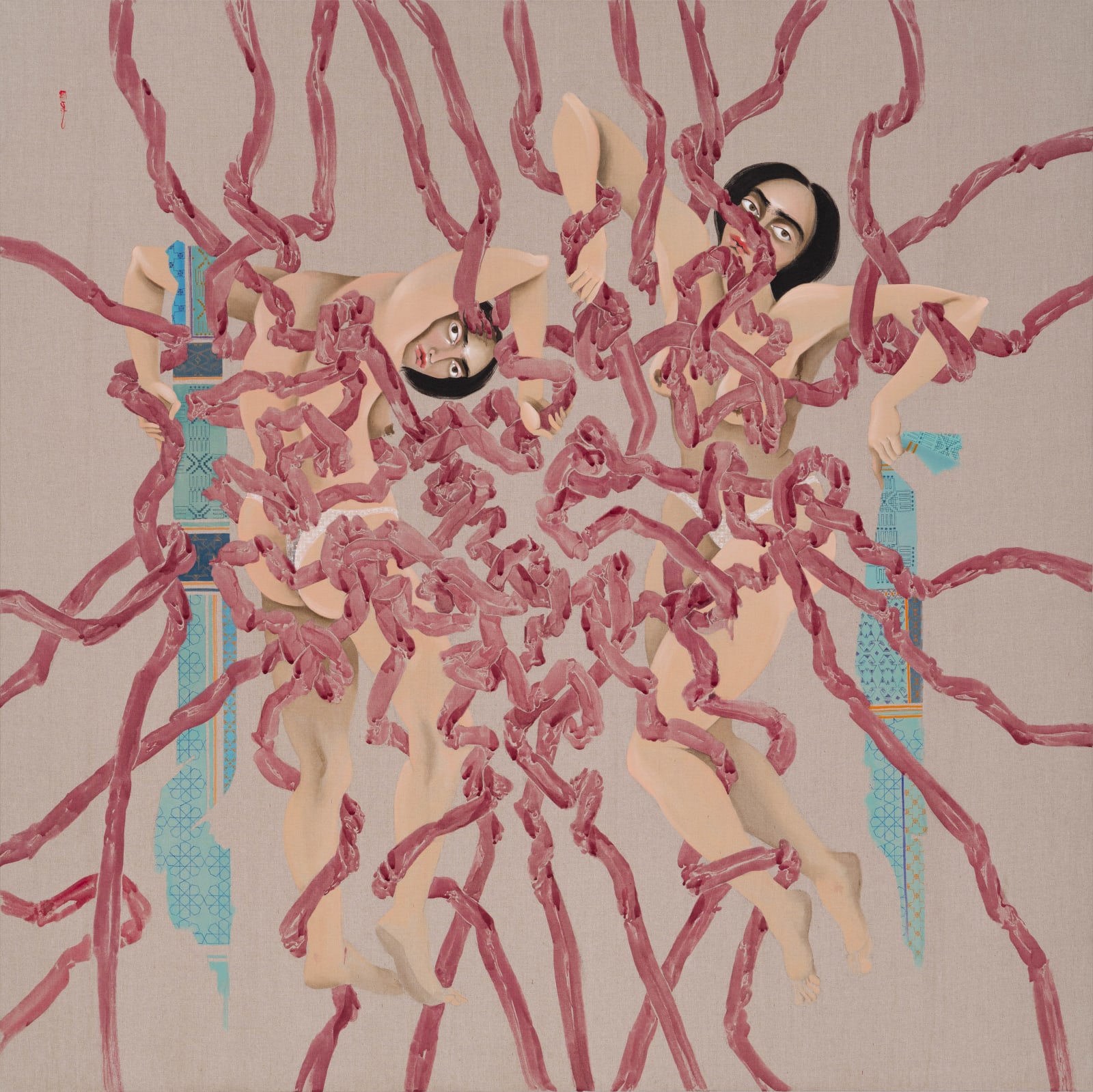







Hayv Kahraman
Torshi vine, 2022
Oil and torshi on linen
177.8 x 177.8 cm
70 x 70 in
70 x 70 in
Copyright The Artist
Further images
-
(View a larger image of thumbnail 1
)

-
(View a larger image of thumbnail 2
)

-
(View a larger image of thumbnail 3
)

-
(View a larger image of thumbnail 4
)

-
(View a larger image of thumbnail 5
)

-
(View a larger image of thumbnail 6
)

-
(View a larger image of thumbnail 7
)

-
(View a larger image of thumbnail 8
)

Torshi vines builds upon Hayv's scientific research into psychotherapeutic neurological models of ‘neurosculpting’ – the potential to rewrite neural pathways. Hayv radically reclaims the gut – our so-called ‘second brain’...
Torshi vines builds upon Hayv's scientific research into psychotherapeutic neurological models of ‘neurosculpting’ – the potential to rewrite neural pathways. Hayv radically reclaims the gut – our so-called ‘second brain’ – as an alternative epistemological engine through which to develop, digest and share new ways of thinking, seeing and relating to disenfranchised peoples.
Emphasising the impact of socio-cultural forces on our somatic states, Hayv’s work centres the digestive organs as the nexus between pain and psychological transfiguration. Female bodies are held in suspension across the canvas, weightless yet shackled by webs of torshi-coloured guts, which they unravel to only then tangle again, knit then unknot, do, undo, learn and unlearn. By their dignified, intent expressions, this is a reality they are accustomed to – re-routing trauma is a task that must be seen to daily. Hayv confronts the familiar condition of feeling ‘stuck’, suggesting that the only way to free oneself from this state is not to struggle against it but to accept and work through it.
The web of guts has been painted with the lilac dye from torshi – a staple Middle Eastern dish of fermented vegetables said to improve the balance of good and bad bacteria in the gut, and in turn boost brain health.
Emphasising the impact of socio-cultural forces on our somatic states, Hayv’s work centres the digestive organs as the nexus between pain and psychological transfiguration. Female bodies are held in suspension across the canvas, weightless yet shackled by webs of torshi-coloured guts, which they unravel to only then tangle again, knit then unknot, do, undo, learn and unlearn. By their dignified, intent expressions, this is a reality they are accustomed to – re-routing trauma is a task that must be seen to daily. Hayv confronts the familiar condition of feeling ‘stuck’, suggesting that the only way to free oneself from this state is not to struggle against it but to accept and work through it.
The web of guts has been painted with the lilac dye from torshi – a staple Middle Eastern dish of fermented vegetables said to improve the balance of good and bad bacteria in the gut, and in turn boost brain health.